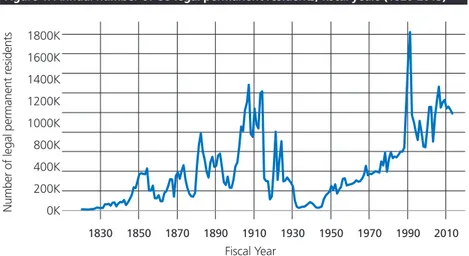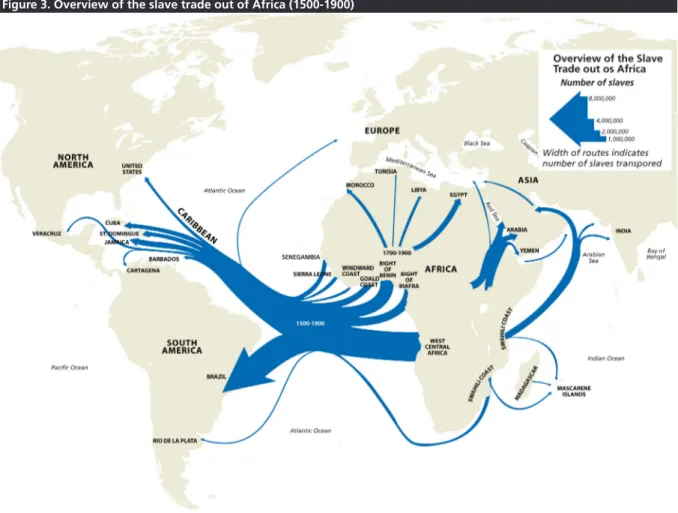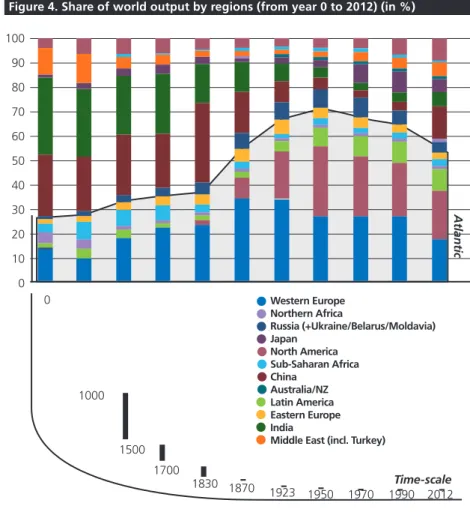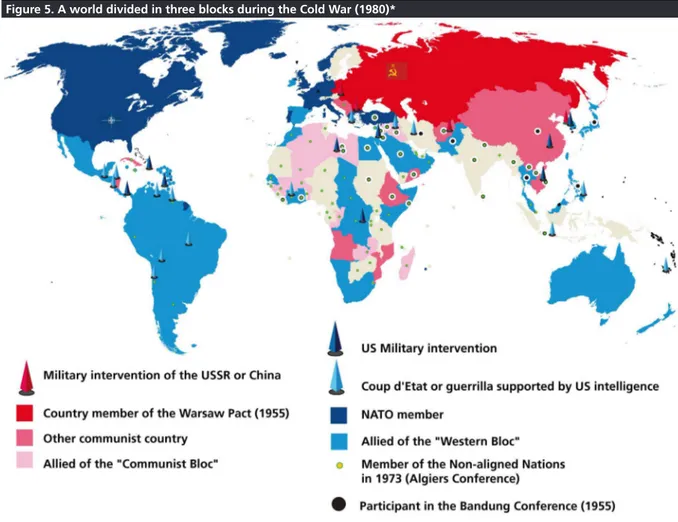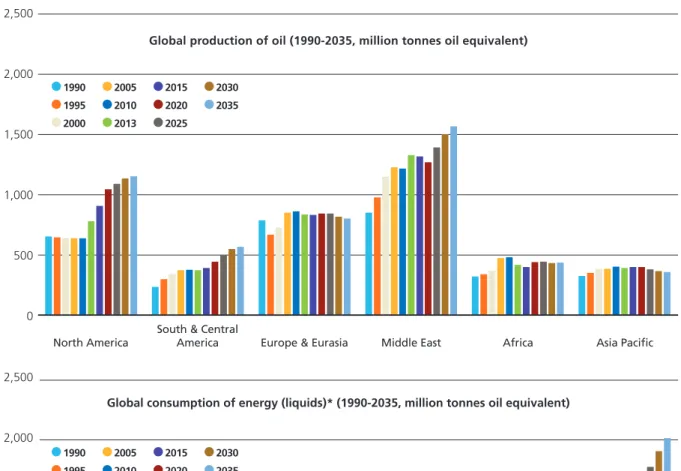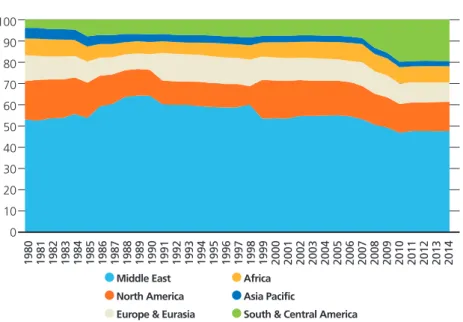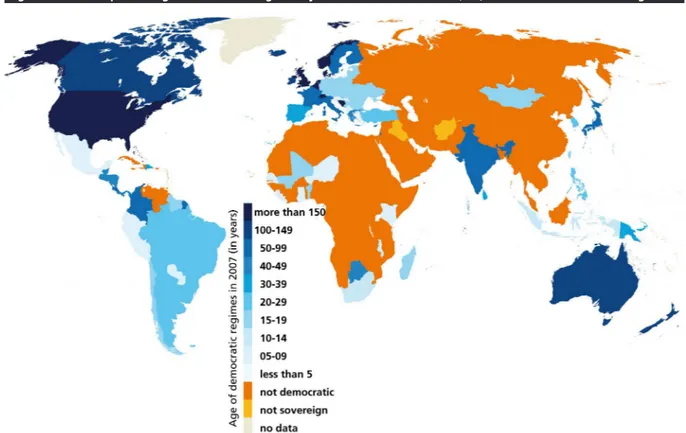Nuno Severiano Teixeira
Instituto Português de Relações Internacionais-NOVA University and Faculdade de Ciências Sociais e Humanas-NOVA University (IPRI/NOVA & FCSH/NOVA)
nst@unl.pt
Daniel Marcos
Instituto Português de Relações Internacionais-NOVA University and Faculdade de Ciências Sociais e Humanas-NOVA University (IPRI/NOVA & FCSH/NOVA)
daniel.marcos@ipri.pt
A HISTORICAL PERSPECTIVE OF THE ATLANTIC’S
EVOLUTION
A previous extended version of this
article was published as TEIXEIRA,
Nuno Severiano and Daniel MARCOS.
Historical Power Relations and chan-ges in the Atlantic: a two centuries overview. Atlantic Future Scientific Paper, 2015, 27.
Introduction
The role of historical links in the Atlantic
An overview of the balance of power in the Atlantic Space makes it clear that before us we have a deeply interconnected area that evolved from common historical ground. The concept of the Atlantic developed by Jacques Pirenne, identifying it as a “European sea”, controlled from the 16th to the 18th century by Portugal, Spain, England, France and the Netherlands, somehow still prevails (Pirenne 1948). However, it would be naïve to regard the Atlantic as a united, homogenous area. Within the Atlantic region, there are concrete elements of globalisation, with people, commodities, technologies of transportation and communica-tion creating specific interdependence links between the four shores of the Atlantic Space.
Atlantic studies scholars generally acknowledge that the end of the early modern period in the late 18th century was a milestone for the space. Of course, defining end dates is a complex issue and historical processes can be protracted in time, but it appears clear that, after 1750, the colonial, cultural and economic ties between Africa, Europe and the Americas began to gradually change. In this sense, the Ameri-can Revolution is seen as an “opening salvo” in the transformation of the Americas, which had repercussions in Europe and Africa during the long 19th century (Gabaccia 2004). Additionally, if the American Revolution can be considered a starting point for this transformation, the subsequent French Revolution (1789) definitely signals the decisive political rupture between America and Europe (Thornton 2012). Be-tween 1811 and 1830, Paraguay, Argentina, Chile, Venezuela, Mexico, Colombia, Peru, Bolivia, Ecuador and Brazil all became independent states. As the almost immediate proclamation of republics in the former Spanish colonies of America seem to show four decades after the American and French Revolutions, these political independences would not have been possible without the revolutions (Chasteen 2008; Eliott 2006; Costa 1999).
The influence of the American and French Revolutions on Latin America was twofold. On the one hand, the majority of the newly independent republics adopted the political and institutional system of the US (divi-sion of powers, strong federalism, phrasing of the constitutional texts), albeit always “adapted to local and social conditions” (Thornton 2012). However, ideologically, the egalitarian principle of the French revolution prevailed, as reflected in the French Declaration of the Rights of Man and of the Citizen, which inspired the republican leaders in South America (Klooster 2009). As Donna Gabaccia puts it, in the wake of anti-colonial and republican evolutions, ideologies of nation-building also attempted to rewrite Atlantic cultural connections. The United States initially an-nounced its intention of building a new American civilisation independent of Europe, while Latin American nations more often promised to refine European civilisation in a new environment (Gabaccia 2004).
be-tween the Americas and Europe was further established as part of the international status quo, assured by an informal alliance between the United States and Great Britain (Morgenthau 1962). In fact, the Great Rapprochement experienced in US-British relations in the final years of the 19th century enabled a convergence of interests between these two powers. The role of the US as the power responsible for American security was gradually recognised and, after the Spanish loss of Cuba in 1898, European possessions in the Americas became residual.
At the same time, in Atlantic Africa, the second half of the 19th cen-tury witnessed a new period of European imperial expansion. Triggered by the Industrial Revolution and a direct consequence of the growing competition between the European powers, the scramble for Africa changed the type of colonialism in practice until then. In search of new markets, filled with a sense of superiority granted by their control of technology and supported by the latest scientific developments, the Europeans embarked on a process of penetration and occupation of territories inside the continent. With the end of the slave trade, Africa quickly became the centre of dispute between European powers, who had not yet recovered from their colonial losses in the Americas, in a process that established many of the frontiers that currently divide the majority of African countries (Hobsbawm 1989; Simms 2013).
Human flows, economic drivers and energy
resour-ces in the Atlantic
Despite the many changes it has suffered over time, the Atlantic can still be seen as an interdependent area. The region’s history was shaped by a variety of coherent and constant elements that can be traced in several dimensions. After the end of formal European political domi-nance over the Americas, in terms of economic exchanges, free and un-free migratory tendencies and the circulation of ideas, the Atlantic was, during the whole 19th century, a highly interdependent area. Indeed, notwithstanding its formal independence, the American republics were dependent until the early 20th century on “European capital, European commerce and European influence” (Rothschild 2013). There was, in fact, a sense of community shared by the two shores of the Atlantic, in particular between Latin America and the European powers.
As Marcos, Sanches and Farrés (2015) have pointed out, one of the constant and more influential foundations of the Atlantic as a region was the free and forced migration movement from Africa and Europe to the Americas during the 19th and 20th centuries. Technology and com-munications, the development of the modern capital and economic sys-tem, new migrations, cultural exchanges and the end of the slave trade and slavery itself caused the Atlantic to change drastically over the 19th century, in terms of both transcontinental and transnational connec-tions. The transition around the 1850s from sail to steam brought about an increase in mass migrations from Europe to the Americas, which by the end of the 19th century were connected by a particularly dense and secure transatlantic network of high-speed communications. Between 1820 and 1920, the world experienced explosive population growth that led migratory waves of European citizens to Canada, the US and Latin American countries.
Figure 1. Annual number of US legal permanent residents, fiscal years (1820-2013)
1800K
1600K
1400K
1200K
1000K
800K
400K
200K
0K
Number of legal permanent r
esidents
Fiscal Year
1830 1850 1870 1890 1910 1930 1950 1970 1990 2010
Source: Migration Policy Institute 2013.
Figure 2. Immigration to the US (selected decades*)
* The data cover only the specific period and do not reflect the total migration from each nationality. Source: Created by CIDOB using data from Overy 2007.
as sugar, tobacco, coffee, cocoa, indigo and cotton in the Americas and Af-rica (Benjamin 2009). Due both to ideological and political issues – religious reasons and the impact of the Enlightenment, as well as the slave rebellion in Santo Domingo after the French Revolution – this system came to an end in the second half of the 19th century, with the emancipation of slaves in the United States between 1863 and 1865, Cuba in 1886 and Brazil in 1888. Still, the abolition of slavery in the Americas did not entail the end of slavery and forced labour in Africa, which was enforced by the imperial scramble for Africa in the late 19th century. In the Americas, if the collapse of slavery meant freedom for Africans and the African-Americans, it certainly did not put an end to racial discrimination. In other words, “freedom, however, did not often bring full independence, prosperity, justice or civil rights. In their different national homes, the former slaves and their progeny were generally desperately poor and occupied the bottom rung of society’s ladder” (ibid.).
Figure 3. Overview of the slave trade out of Africa (1500-1900)
Source: Eltis and Richardson 2010.
in this area, albeit in a different shape. The decolonisation process of the second half of the 20th century was responsible for this shift and led to the emergence of a new trend of mobility from African countries to their former European metropolis. At the same time Latin American workers looked to the US in search of better economic and social conditions. In the last twenty years, the liberalisation of trade and population flows in the North Atlantic has reinforced this South-North movement (Campos 2014). Closely connected to the human flows, the concentration of economic resources within the Atlantic Space can also be seen as a factor of unity and convergence. Gener-ally accepted historical evidence clearly supports the idea that the Atlantic is an interdependent economic space where trade and invest-ment have flourished to concentrate an unprecedented amount of wealth, particularly in the North Atlantic.
Figure 4. Share of world output by regions (from year 0 to 2012) (in %)
1000
1500 1700
1830 1870 1923
1950 1970 1990 2012 0
100
90
80
70
60
50
40
30
20
10
0
Atlantic
Time-scale
Western Europe Northern Africa
Russia (+Ukraine/Belarus/Moldavia) Japan
North America Sub-Saharan Africa China
Australia/NZ Latin America Eastern Europe India
Middle East (incl. Turkey)
Source: Created by CIDOB using data from Piketty 2014 (original data).
was most poignantly shown in the dramatic effects of the Great De-pression. As Mary Nolan puts it, “the depression destroyed the institu-tions, ideas, and networks that had structured transatlantic relations” (Nolan 2012). The immediate response to the crisis was a global rush to protectionism and a focussing on what was considered to be the national interest, despite the narrowness of its definition. The Euro-American disputes around issues such as reparations and war debts, the gold standard, and protectionism eventually “reshaped the trans-atlantic and global flows of goods, capital, and people” (ibid.).
Post-World War II economic growth allowed the reconstruction of
US-western Europe interdependence, a process that was fostered by the development of a financial and economic system of agencies and agreements, following the Bretton Woods conference in July 1944. Pinpointing the inter-war period as the main root of the European crisis that ended up in the World War II, states began to build a new
monetary system in which currencies were convertible and nations could mutually benefit from the increase in trade. The goal was to create an alternative to the financial system that had prevailed in the pre-war decades, which would be less rigid than the gold standard, increasingly reliable and more mutually sustaining than a floating-rate currency regime. Following these conversations, the International Monetary Fund was set up “to facilitate the expansion and balanced growth of international trade”, and the proposal came up of an in-ternational trading organisation. Thus, in 1947, the General Agree-ment on Tariffs and Trade (which in 1995 became the World Trade Organization) took shape. Its purpose was to establish an agreement on “tariffs and other concessions for contracting partners, as well as codes for trade practices and procedures for handling breaches and disputes” (Judt 2005).
Bretton Woods brought about deep changes in the global financial system, with consequences for the Atlantic Space. For the first time, there were unprecedented levels of external interference in national practices, while currencies became convertible to each other in order to foster international trade. At the same time, the dollar assumed the role of leading currency in terms of trade. For these reasons, “the post-war Bretton Woods system did not come about all at once” (Judt 2005). The Soviet Union stood outside this system and even countries like the United Kingdom and France only joined during the 1950s. It collapsed in the early 1970s, with the US dollar abandon-ment of the international monetary system erected in Bretton Woods, and was replaced by a liberalised floating-rate system that in a few years contributed to the devaluation of national currencies and to the increase of non-fuel commodities. This situation worsened as a consequence of the two oil shocks in the 1970s which introduced another element of uncertainty to the prosperous economies of the Western World. The growing competition from the newly industrial-ised countries of Asia, together with currency fluctuations and rising commodity prices, added to the stagnation of the developed econo-mies of Europe and North America and led to increased unemploy-ment rates (ibid.). These developunemploy-ments contributed to a profound change in global and Atlantic wealth distribution. Competition was the new motto in commercial terms, and this was accelerated with the end of the Cold War.
Figure 5. A world divided in three blocks during the Cold War (1980)*
* Military interventions between 1945 and 1990.
Source: Created by CIDOB adapting two existing maps published in the Atlas du Monde Diplomatique 2013: Le tiers-monde entre deux blocs a la fin des annés 1970 and Interventions tous Azimuts.
At the same time, in the South Atlantic, East-West confrontation forced Latin American and African countries to plead for financing and protec-tion from western Europe, the US and USSR. This process was to some extent opposed by the emergence of economic “third-worldism”, which proposed a national industrialisation process whose last aim was to “cut, as much as possible, the links between centre and periphery” (Valladão 2015). Nevertheless, in the end, North-South Atlantic eco-nomic interdependence was not hindered. If, in the North, we have industrialised countries that very much favour the establishment of free trade agreements, in the South, there are economies that are extremely dependent on the exploitation of natural resources and commodities (Marcos 2015).
eastward, making the Middle East, Central Asia and Russia the centre of gravity for energy supply, the last decades have been the stage for a revolution. Shale revolution in the North Atlantic and off-shore energy resources recently discovered in the South Atlantic have become game-changers for Atlantic trade, recovering part of its lost centrality and making it more attractive for the development of new transport con-nections, in particular with the Pacific (through an expanded Panama Canal and the Chinese commitment to fund a transcontinental railway from Peru to Brazil) (Isbell 2014).
Figure 6. Global energy imbalances
1990 2005 2015 2030 1995 2010 2020 2035 2000 2013 2025
1990 2005 2015 2030 1995 2010 2020 2035 2000 2013 2025
2,500
2,000
1,500
1,000
500
0
North America
South & Central
America Europe & Eurasia Middle East Africa Asia Pacific
2,500
2,000
1,500
1,000
500
0
North America
South & Central
America Europe & Eurasia Middle East Africa Asia Pacific
Global consumption of energy (liquids)* (1990-2035, million tonnes oil equivalent) Global production of oil (1990-2035, million tonnes oil equivalent)
* Including biofuels.
Figure 7. Share of global oil reserves, by region (1980-2014)
100
90
80
70
60
50
40
30
20
10
0
1980 1981 1982 1983 1984 1985 1986 1987 1988 1989 1990 1991 1992 1993 1994 1995 1996 1997 1998 1999 2000 2001 2002 2003 2004 2005 2006 2007 2008 2009 2010 2011 2012 2013 2014
Middle East Africa North America Asia Pacific
Europe & Eurasia South & Central America
Source: Created by CIDOB using data from Energy Outlook 2035, British Petroleum (BP).
The political and security patterns and factors
that shaped Atlantic history in the 20th century
As we have attempted to show in the previous sections, human flows, economic drivers and energy resources allowed the creation of an increas-ingly interdependent − though not homogenous or united − Atlantic. This is all the more evident in terms of political patterns and factors: ever since the American and French Revolutions a separation has emerged between the four shores of the Atlantic. Nevertheless, the 20th century was marked by a constant search for transatlantic rapprochement, based on the vitality of multilateral approaches. In the end, this process is still an elusive quest, as the plurality of political behaviour in the Atlantic Space – with countries displaying varied foreign policy and normative orientations – is clearly shown (Alessandri 2015).
The period of transition in the Atlantic area begun by the World War I can
be seen as an attempt to erode the dividing line created by the Monroe doctrine – responsible for the emergence of a pan-American cultural and political distinctiveness – between Europe and the Americas. French Prime Minister Georges Clémenceau aimed to establish an alliance between the United States, Great Britain and France, but US President Woodrow Wil-son decided instead to promote the League of Nations. His goal was to arrange international relations in a whole new way, based on a notion of international community that mirrored the North American constitutional model. However, the Senate inhibited US participation in Wilson’s project and despite Brazil’s temporary membership (the country joined the North American intervention in the European war), the absence of the main American power in the League of Nations was deeply felt and contrib-uted to the quick discrediting of the new intergovernmental organisation (Manela 2007; May, Rosecrance and Steiner 2010).
in Asia and in Africa. The President’s references to self-determination sparked the beginning of the decolonisation movement throughout the colonies. Though it would take until the second half of the 20th century to materialise, it sprang from the aftermath of World War I. Precisely because
of this, Woodrow Wilson’s project was always regarded by the European colonial powers, particularly Great Britain and France (the two most im-portant victorious allies), with suspicion. These countries were unwilling to discuss their colonial empires and policies during the peace talks – except for those directly related to the former German and Ottoman territories outside Europe (Manela 2007). Therefore, what might have been a chance to overcome the division in the Atlantic (by means of the establishment of a community bound by the League of Nations) turned out to be a missed opportunity, either due to the United States’ absence from the league or the unwillingness of the European powers to follow Wilson’s principles regarding the idea of self-determination. Nonetheless, Woodrow Wilson’s goal clearly shows that the United States was willing to cross the Atlantic and move closer to the European powers and to influence them, reversing the traditional flow in the Atlantic, in which the main political, economic and cultural influences usually went from Europe towards the Americas (Thompson 2010).
World War II and the Cold War led to a second tentative rapprochement
between the various shores of the Atlantic. The hegemonic power of the US in the Atlantic Space was finally established and lasts until the present day. The Anglo-American war coalition, defined in the Atlantic Charter in mid-August 1941, persisted after the victory over Nazism and was later enlarged with the Washington Treaty and the creation of the North Atlan-tic Treaty Organization (NATO) in 1949 (Simms 2013). The AtlanAtlan-tic Pact marked the stepping forward of the United States as the country respon-sible for the unity of the Western democracies (Lundestad 2005). At the same time, the Rio de Janeiro Treaty consolidated collective security in the Western Hemisphere. Emerging as the hegemonic power in the Atlantic, the United States became the sponsor of Western unity and Atlantic divi-sion (Kaplan 2007).
The strategic competition between the United States and the Soviet Un-ion was focussed on the East-West axis. In this dispute, the South Atlantic was of little relevance to the international balance of power during the Cold War1. However, the post-World War
II period, and especially the
1956 Suez debacle, confirmed the relative decline of western Europe, including France and the United Kingdom. There were two consequences of this decline. In Europe, the speeding up of the European integration process, based on the reinforced Bonn-Paris axis, strongly supported by both the Eisenhower and Kennedy administrations in Washington (Sou-tou 1996). In the end, this process promoted the “reaffirmation of Eu-rope’s distinctiveness”, when compared to the Americas and Africa (Ales-sandri 2015).
With regard to Africa, it allowed the emergence of an independent fourth shore of the Atlantic. This so-called Euro-African unity dissolved in a suc-cession of independences that defined the end of the European overseas empires, as well as the projects for building a “third force” as an alternative to the United States and Soviet Union. In the space of ten years, independent states replaced the former colonies in Africa and, on its Atlantic front, added a set of new states in Morocco, Liberia and South Africa, which were
im-1. As Ian Lesser puts it “the Cold War strongly reinforced this North Atlantic axis. (…) The Non-Aligned Movement notwithstanding, the importance of actors in the ‘global south’, where they mattered at all, was largely deri-vative of priorities and competitions centered elsewhere” (Lesser 2010).
World War II and
the Cold War led to
a second tentative
rapprochement
between the various
shores of the Atlantic.
The hegemonic power
of the US in the Atlantic
Space was finally
mediately recognised as member-states by the United Nations. The political map of the African Atlantic was completed after the independence of Cape Verde, Sao Tome and Principe, Guinea-Bissau and Angola in 1974-1975, and, after the end of the Cold War, Namibia. At the end of this process, the political map of the Atlantic was finally defined as we know it today.
Figure 8. World map of the age of democratic regimes – years before 2007 since the (last) transition to a democratic regime
Source: Created by CIDOB adapting a map by Max Roser (http://ourworldindata.org/data/political-regimes/democratisation/), who uses data from Boix, Miller and Rosato 2012.
As for Latin America, on the other hand, the Cold War did not change the core nature of its relations with the United States. In fact, in Latin America, “the Cold War projection of US power was based on its ex-isting strategic and economic predominance”, which dated back to the early 20th century. Institutionally, the grounds for assuring US control of Latin America were reshaped in the late-1940s with the signature of the Inter-American Treaty of Reciprocal Assistance (Rio Treaty) in 1947 (the first move of an alliance system established by the US worldwide during the Cold War of which NATO is the one that has endured) and the crea-tion of the Organizacrea-tion of American States (OAS) the next year. From a geopolitical point of view, the goal was now to fight communism, and Washington officials “expected a particularly high degree of conformity to US policy preferences” (Coatsworth 2010).
different solutions found included intense US engagement, either through direct military intervention or by encouraging the countries’ armed forces to stage coups (as, for instance, in Guatemala, the Dominican Republic and Chile). On the other hand, there was always local resistance, as the oppositions sought to distance them from the influence of the United States (Coatsworth 2010).
The Atlantic in the face of a new international order
The end of the Cold War paved the way for new possibilities in the Atlan-tic Space. Together, the decolonisation of Africa, the democratisation of Latin America and of some areas of southern Africa, the fall of the Berlin Wall and the emergence of major regional powers led to a new moment in inter-Atlantic relations (Buzan and Weaver 2003; Lynch and Crawford 2011; Whitehead 2001). In this sense, the post-Cold War and, even more, the post-9/11 developments led to a redefinition of the international order, with diminishing global leadership by the United States, and the emergence of new power in the Asia-Pacific region (China, India and Ja-pan) and of some individual economies in the South Atlantic such as Brazil and South Africa. Throughout this period, the North Atlantic continued to benefit from the existence of a stable, stronger institutionalisation of transatlantic relations, whereas in the South the emerging powers seemed to adopt a strategy of greater autonomy.
Despite the North Atlantic losing its central position in international poli-tics and the South Atlantic’s minor strategic relevance, the so-called third wave of democratisation (Huntington 1991) created a new trend in the interaction between the United States, Brazil and Latin America, in the relations between the Americas and Europe, and even in the relationship between the US, the European Union, Brazil and South Africa. In 2015, the majority of the countries in the Atlantic Basin are either democracies or partially free countries, though this does not mean that issues such as democracy and human rights are not still challenged today in these regions (Gratius 2015). Additionally, the participation of Latin America and Africa in the Non-Aligned Movement caused those countries to remain “focused on traditional principles such as sovereignty, non-intervention in the do-mestic affairs of other states, and territorial integrity”, notwithstanding South Atlantic multilateral experiments mostly shaped by the European integration project. In other words, it is too early to view norms and values as the unifying factor that might bring the Atlantic Basin countries closer (Alessandri 2015).
The recognition of common interests on international and regional securi-ty issues, the increase of economic exchanges between all parties and the growing relevance of the political and cultural links in international rela-tions should lead to a strengthening of strategic interacrela-tions in the broad Atlantic Space. In fact, even though political values and norms such as de-mocracy and the openness of political systems are the result of increasing economic development in the South Atlantic, the wider Atlantic is still a heterogeneous political area. The emergence of new players, demanding reform of the global governance institutions, is emphasising the pluralistic nature of the Atlantic. Only interregional multilateral initiatives focused on specific and defined priorities can prompt Atlantic actors to play a critical role in regional and global efforts (ibid.).
References
ALESSANDRI, Emiliano. Atlantic Multilateralism and Prospects for Pan-Atlantic Institutions: An Historical Perspective, Atlantic Future Scientific Paper, 2015, 28.
BENJAMIN, Thomas. The Atlantic World. Europeans, Africans, Indians and their Shared History, 1400-1900. Cambridge: Cambridge University Press, 2009.
BOIX, Carles; Michael MILLER and Sebastian ROSATO. A Complete Data Set of Political Regimes, 1800-2007. Comparative Political Studies (26 No-vember 2012) (online) http://cps.sagepub.com/content/early/2013/04/04 /0010414012463905
BUZAN, Barry and Ole WAEVER. Regions and Powers. The Structure of International Security. Cambridge: Cambridge University Press, 2003.
CAMPOS, Camila Pastor de María. Geometries of Human Mobility in the Atlantic Space, Atlantic Future Scientific Paper, 2014, 13.
CHASTEEN, John C. Americanos. Latin America’s Struggle for Independ-ence. Oxford: Oxford University Press, 2008.
COATSWORTH, John H. The Cold War in Central America, 1977-1991. In: WESTAD, Odd A. and LEFFLER, M., eds. The Cambridge History of the Cold War. Volume 3. Cambridge: Cambridge University Press, 2010, pp. 201-221.
COSTA, Emilia Viotti da. Da Monarquia à República: momentos decisivos. São Paulo: UNESP, 1999.
DOMINGUEZ, Jorge. US-Latin American Relations during Cold War and its Aftermath. In: BULMER-THOMAS, V. and DUNKERLEY, J., eds. The United States and Latin America. The New Agenda. London: Institute of Latin America Studies, 1999, pp. 33-50.
ELIOTT, John Huxtable. The Atlantic World. Britain and Spain in America (1492-1830). New Haven: Yale University Press, 2006, pp. 369-402.
ELTIS, David and David RICHARDSON. Atlas of the Transatlantic Slave Trade. New Haven: Yale University Press, 2010.
GABACCIA, Donna. A Long Atlantic in a Wider World, Atlantic Studies, 2004, 1:1, pp. 1-27.
GRATIUS, Susanne. Political, social and cultural trends in the Atlantic. At-lantic Future Scientific Paper, 2015, 35.
HOBSBAWM, Eric. The Age of Empire, 1875-1914. New York: Vintage Books, 1989.
ISBELL, Paul. Atlantic Energy and the Changing Global Energy Flow Map. Atlantic Future Scientific Paper, 2014, 17.
JUDT, Tony. Postwar: A History of Europe since 1945. New York: Pen-guin Press, 2005.
KAPLAN, Lawrence. NATO 1948. The Birth of the Transatlantic Alliance. New York: Rowman & Littlefield Publishers, 2007.
KLOOSTER, Wim. Revolutions in the Atlantic World. A Comparative His-tory. New York: New York University Press, 2009.
LESSER, Ian. Southern Atlanticism. Geopolitics and strategy for the other half of the Atlantic Rim. Brussels: German Marshall Fund of the United States, Brussels Forum Paper Series, 2010.
LUNDESTAD, Geir. The United States and Western Europe since 1945: From “Empire” by invitation to transatlantic drift. Oxford: Oxford Uni-versity Press, 2005.
LYNCH, Gabrielle and Gordon CRAWFORD. Democratization in Af-rica 1990-2010: an assessment. Democratization, 2011, 18:2, pp. 275-310.
MANELA, Erez. The Wilsonian Moment. Self Determination and the In-ternational origins of the Anticolonial Nationalism. Oxford: Oxford Uni-versity Press, 2007.
MARCOS, Daniel. Doutrina Monroe. In: CANAS MENDES, N. and PEREI-RA COUTINHO, F., coord. Enciclopédia das Relações Internacionais. Lis-boa: Dom Quixote, 2014, pp. 168-170.
MARCOS, Daniel. Portuguese perspectives on the evolution of the At-lantic basin: an overview. Atlantic Perspectives: interview report, Atlan-tic Future, 2015, 14.
MARCOS, Daniel; Edalina SANCHES and Oriol FARRÉS. Report on the Historical Dataset. Atlantic Future Dataset Report, 2015, 1.
MAY, Ernest; Richard ROSECRANCE and Zara STEINER. History and Neo-realims. Cambridge: Cambridge University Press, 2010.
MIGRATION POLICY INSTITUTE. Legal Immigration to the United States, 1820-Present. 2013 (online) http://www.migrationpolicy.org/programs/ data-hub/charts/Annual-Number-of-US-Legal-Permanent-Residents
MORGENTHAU, Hans. Alliances. In: MORGENTHAU, H. The Restoration of American Politics. Chicago: The University of Chicago Press, 1962, pp. 176-178.
NOLAN, Mary. The Transatlantic Century: Europe and America, 1890– 2010. Cambridge, Cambridge University Press, 2012.
PIKETTY, Thomas. Capital in the 21st century. Cambridge and London: Harvard University Press, 2014.
PIRENNE, Jacques. Les Grands Courants de l’Histoire Universelle III. Des
traités de la Westphalie à la Révolution française. Neuchatel: Editions de la Bacconière, 1948.
ROTHSCHILD, Emma. Late Atlantic History. In: CANNY, N. and MORGAN, P., eds. The Oxford Handbook of the Atlantic World. 1450-1850. Oxford: Oxford University Press, 2013, pp. 634-648.
SIMMS, Brendan. Europe. The Struggle for Supremacy, 1453 to the Present. London: Allen Lane, 2013.
SOUTOU, George-Henri. L’Alliance Incertaine. Les Rapports Politic-Strate-giques Franco-Allemands, 1954-1996. Paris: Fayard, 1996.
TEIXEIRA, Nuno Severiano and Daniel MARCOS. Historical Power Rela-tions and changes in the Atlantic: a two centuries overview. Atlantic Fu-ture Scientific Paper, 2015, 27.
THOMPSON, John. Wilsonianism: the dynamics of a conflicted concept. International Affairs, 2010, 86:1, pp. 27-48.
THORNTON, John. A Cultural History of the Atlantic World, 1250-1820. Cambridge: Cambridge University Press, 2012.
VALLADÃO, Alfredo. Reviving pan-Atlantic interdependencias – A labora-tory for global governance. Atlantic Future Scientific Paper, 2015, 29.
